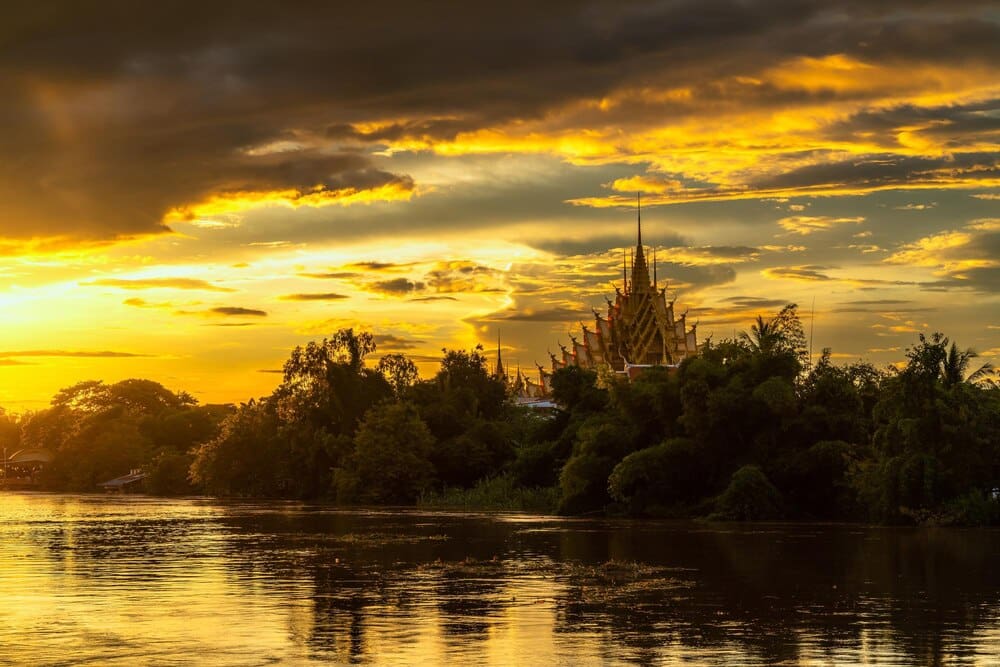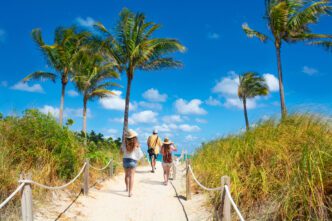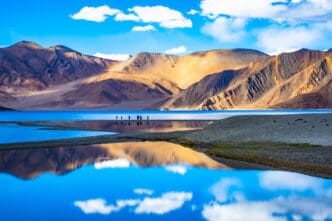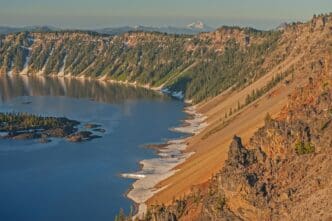For travelers seeking a journey that encapsulates ancient culture, urban energy, and idyllic island life, a north-to-south expedition through Thailand offers an unparalleled experience. This classic route, ideal for both first-time visitors and seasoned backpackers, typically begins in the mountainous northern city of Chiang Mai, journeys through the bustling capital of Bangkok, and culminates on the world-famous beaches of the southern coast. Best undertaken during the cool, dry season from November to February, this itinerary allows adventurers to witness the Kingdom’s incredible diversity, from sacred temples and ethical elephant sanctuaries in the north to the historic heart of the nation and the stunning limestone karsts and turquoise waters of the south.
Planning Your Thai Adventure: What to Know Before You Go
A successful trip requires a bit of forethought. Thailand is remarkably traveler-friendly, but understanding the basics of entry, timing, and transport will ensure your journey is smooth and stress-free.
Visas and Entry Requirements
For many nationalities, including those from the United States, Canada, the United Kingdom, and Australia, Thailand offers a visa exemption scheme. This typically allows for a stay of 30 days when arriving by air and is often sufficient for this itinerary. These rules can change, so it is always essential to check the latest requirements with your local Royal Thai Embassy or Consulate before booking your travel.
If you plan to stay longer than 30 days, you may need to apply for a 60-day Tourist Visa in advance from your home country. Overstaying your visa can result in fines and potential legal complications, so be sure to monitor your entry and departure dates carefully.
Best Time to Visit
Thailand’s climate is dominated by three seasons. The cool, dry season from November to February is widely considered the best time to visit, offering pleasant temperatures and minimal rainfall, making it perfect for sightseeing and beach activities. This is also the peak tourist season, meaning more crowds and higher prices.
The hot season runs from March to May, with temperatures soaring, especially in April. While still manageable, the heat can be intense for extensive outdoor exploration. The rainy season, from roughly June to October, is characterized by monsoon downpours. However, these rains are often short, intense bursts in the afternoon, leaving the rest of the day clear. Traveling during this “green season” means fewer crowds, lower prices, and incredibly lush, vibrant landscapes.
Budget and Currency
The official currency is the Thai Baht (THB). Thailand can be an incredibly affordable destination. A budget backpacker can comfortably get by on $30-$40 USD per day, staying in hostels and eating street food. A mid-range traveler, preferring private rooms in guesthouses and a mix of street food and restaurant meals, might budget $60-$80 USD per day.
ATMs are widely available in all but the most remote areas, but they typically charge a significant foreign transaction fee (around 220 THB) on top of any fees from your home bank. It’s often more economical to withdraw larger sums at once. Credit cards are accepted at larger hotels, restaurants, and department stores, but cash is king for markets, street food, and smaller businesses.
Part 1: The Lanna Kingdom of the North (7-10 Days)
Your journey begins in the cooler, mountainous region of Northern Thailand, the former seat of the Lanna Kingdom. This area is celebrated for its laid-back atmosphere, rich cultural heritage, and stunning natural scenery.
Arrival in Chiang Mai: The Northern Capital
Chiang Mai serves as the perfect entry point. Its international airport connects to major hubs, making it easily accessible. Plan to spend at least three to four days here to acclimate and explore. The heart of the city is the Old City, a square area surrounded by a moat and remnants of an ancient wall.
Inside the walls, you’ll find hundreds of stunning temples, with Wat Chedi Luang and Wat Phra Singh being must-visits. As dusk falls, the city comes alive with markets. The Night Bazaar is a nightly institution, but the Saturday and Sunday Walking Street markets are arguably more impressive, offering handicrafts, art, and a staggering array of delicious street food.
Ethical Elephant Encounters
Northern Thailand is famous for its elephants, but it’s critically important to choose an ethical sanctuary. For decades, elephants were exploited for logging and tourist rides, causing immense physical and psychological harm. Today, a growing number of sanctuaries are dedicated to rescue and rehabilitation.
Look for places like Elephant Nature Park or similar reputable organizations that do not offer riding, shows, or any unnatural performances. A visit to a true sanctuary involves observing these majestic animals in a more natural habitat, helping to prepare their food, and perhaps bathing them in a river. It is a profoundly moving experience that supports animal welfare.
Beyond the City: Pai or Chiang Rai?
From Chiang Mai, consider a side trip to expand your northern experience. The choice often comes down to Pai or Chiang Rai. Pai, a three-hour winding bus ride away, is a small town with a bohemian, backpacker vibe nestled in a picturesque valley. It’s known for its relaxed atmosphere, waterfalls, a canyon, and hot springs, best explored by renting a scooter.
Alternatively, Chiang Rai, a few hours north by bus, is home to some of the most unique artistic temples in the world. The all-white, intricate Wat Rong Khun (the White Temple) and the stunningly blue Wat Rong Suea Ten (the Blue Temple) are architectural marvels that feel more like contemporary art installations than traditional places of worship.
Part 2: The Heart of the Kingdom – Central Thailand (4-6 Days)
After immersing yourself in the north, it’s time to journey south to the nation’s vibrant and chaotic core. The transition from the tranquil mountains to the urban sprawl of Bangkok is a thrilling part of the adventure.
Journey to Bangkok: The City of Angels
The most classic way to travel from Chiang Mai to Bangkok is via the overnight train. It’s an experience in itself, allowing you to watch the landscape change from your window and saving you the cost of a night’s accommodation. Booking a sleeper berth in an air-conditioned carriage is recommended for comfort. Alternatively, numerous budget airlines offer the short, one-hour flight for a very reasonable price.
Navigating the Capital’s Chaos
Bangkok is an exhilarating assault on the senses. Dedicate at least three days to this sprawling metropolis. The cultural heart lies along the Chao Phraya River. Here you’ll find the unmissable Grand Palace and Wat Phra Kaew (Temple of the Emerald Buddha), as well as Wat Pho, home to the magnificent Reclining Buddha, and Wat Arun (Temple of Dawn) on the opposite bank.
To navigate the city, utilize the efficient BTS Skytrain and MRT subway to bypass the notorious traffic. For riverside attractions, the Chao Phraya Express Boat is both a scenic and practical mode of transport. Experience the backpacker hub of Khao San Road, but also explore the modern shopping malls around Siam and Sukhumvit to see the city’s contemporary face.
A Glimpse into History: Ayutthaya
Just a 90-minute train or bus ride from Bangkok, the UNESCO World Heritage site of Ayutthaya makes for a fantastic day trip. As the former capital of the Siamese Kingdom, this historical park is dotted with the ruins of magnificent temples and palaces that were sacked by the Burmese in the 18th century.
Rent a bicycle to explore the sprawling complex of stone prangs and towering stupas. The most iconic image from Ayutthaya is the serene Buddha head entwined within the roots of a banyan tree at Wat Mahathat, a powerful symbol of the city’s history.
Part 3: Sun, Sand, and Sea – The Southern Beaches (7-14 Days)
The final leg of your journey is a reward of relaxation and tropical beauty. Getting south from Bangkok is easy, with flights, overnight buses, and trains connecting to the main coastal hubs.
Choosing Your Coast: Andaman vs. Gulf
Thailand’s southern coastline is split into two distinct regions. The Andaman Coast on the west is characterized by dramatic limestone karsts rising from turquoise waters. It includes Phuket, Krabi, and the Phi Phi Islands. This side is best visited during its dry season, from November to April.
The Gulf Coast on the east includes the islands of Koh Samui, Koh Phangan, and Koh Tao. Its weather pattern is slightly different, making it a better option if you’re traveling between May and September. Your choice will depend on your timing and travel style.
The Andaman Adventure: Krabi and the Islands
For many, Krabi province embodies the classic image of Thailand’s beaches. Base yourself in Ao Nang, a lively beach town that serves as a launchpad for island hopping. The famous “4 Islands Tour” is a popular day trip, taking you to stunning spots like Phra Nang Beach and its fertility cave.
Just a short long-tail boat ride from Ao Nang is the Railay peninsula, a rock-climbing mecca accessible only by sea. Its breathtaking beaches and laid-back vibe make it feel a world away from the mainland. Further afield, the Phi Phi Islands, made famous by the film The Beach, offer spectacular scenery, though they can be very crowded.
The Gulf Getaway: The Samui Archipelago
On the other side of the isthmus, the Samui archipelago offers a different vibe. Koh Samui is the largest and most developed of the three, with an international airport, upscale resorts, and a family-friendly atmosphere. Koh Phangan is world-famous for its monthly Full Moon Party on Haad Rin beach, but the island has a dual personality. Its northern and western coasts are home to serene yoga retreats, wellness centers, and quiet, beautiful beaches.
Finally, Koh Tao, or “Turtle Island,” is a global hub for scuba diving. It is one of the cheapest and most popular places in the world to get your PADI Open Water certification. The small island is almost entirely dedicated to diving, with calm, clear waters perfect for beginners.
Essential Travel Tips for a Smooth Journey
A few final tips will help you navigate Thailand with respect and ease. When visiting temples, always dress respectfully by covering your shoulders and knees. Remember to remove your shoes before entering any temple building or private home.
Stay hydrated with bottled water, and embrace the street food culture—just choose vendors that are busy with local customers, as high turnover ensures freshness. Be aware of your surroundings and common scams, especially in high-tourist areas. The `wai`—a prayer-like gesture with the hands—is the traditional greeting; a polite nod and a smile in return is always appreciated. Most importantly, be open-minded and patient, and embrace the gentle hospitality that makes Thailand so beloved.
This north-to-south itinerary is more than just a travel plan; it’s a blueprint for discovering the soul of a nation. From the spiritual tranquility of the north, through the electric pulse of Bangkok, to the sun-drenched shores of the south, you will experience a country of incredible contrasts and enduring charm. This journey offers a framework, but the greatest moments will be the spontaneous ones you find along the way, creating memories that will last a lifetime.








